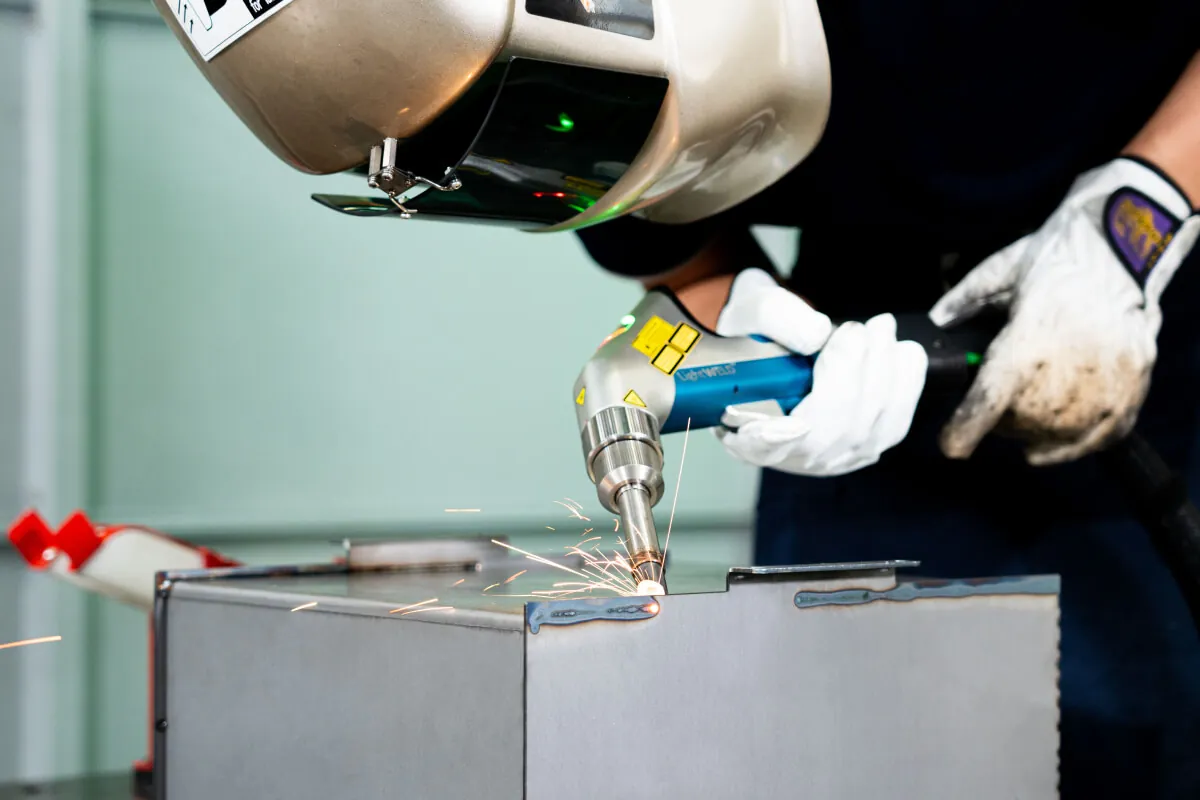In modern, automated sheet metal fabrication, welding is the stage that causes more problems for finishing and cleaning than any other part of the manufacturing process. Poor quality control in sheet metal welding significantly reduces the efficiency of sheet metal fabrication when manual cleaning and fettling is required. Taiwa uses a combination of high quality inert gas welding and robotic welding processes to achieve clean sheet metal welding and reduce production costs.
Why is clean welding so important in modern sheet metal fabrication?
We have previously looked at the various methods of joining sheet metal, but here we will focus on clean sheet metal welding techniques. This is because sheet metal welding that meets the standards required for successful high quality sheet metal fabrication in 2024 is very difficult to achieve for most sheet metal fabricators.
Efficient sheet metal fabrication minimizes finishing work
The reason high quality welding is so important is because finishing work is one of the most labor-intensive tasks in sheet metal fabrication today, and the time taken for finishing work depends entirely on the accuracy and quality of the earlier stages of the sheet metal fabrication process. Poor quality joints require more work to finish to the high standards that our clients expect, and this has a significant impact on the efficiency of the manufacturing process.
Automated manufacturing relies on efficient finishing & assembly processes
Finishing work can be thought of as a preparatory stage of the assembly process, and as experts in component and product assembly we are always looking for ways to improve the efficiency and cost effectiveness of assembly tasks. At our advanced sheet metal fabrication and assembly facility in Taiwan, we use highly automated and computer controlled processes, because of this, tasks that are carried out by hand to complete a product have become increasingly significant in their contribution to the overall cost of production.
Why is there still a need for manual sheet metal welding?
Ideally, our skilled engineers and employees would primarily be programming, setting up, supervising and maintaining machinery, but there are still many tasks that need to be done by people. Some of our welding operations are automated, or semi-automated, but in sheet metal fabrication it is not feasible to fully automate welding processes, especially for relatively small product volumes.
How do we decide which welding technique to use?
At Taiwa we use inert gas metal arc welding (GMAW) with both continuous feed (MIG) and tungsten electrode (TIG) welding equipment. Welding is planned to match the specific requirements of the sheet metal fabrication project. The decision making process includes consideration of surface preparation, joint strength and potential heat distortion as well as the requirement for finishing work after welding. In the video above, our technician is spot welding for a clean seam without heat distortion.
- Surface preparation
- Joint strength
- Heat distortion
- Quality of finish
New metal normally requires very little surface preparation for GMAW to achieve maximum joint strength, especially with thin sheet metals, but it is still necessary to ensure that surfaces are clean, dry and free of oxide film. Heat distortion is more of an issue with sheet metal fabrication than with thicker materials, but is controlled by skilled adjustment of the current and voltage as well as the speed of welding. Spot and tack welding are techniques that reduce heat transfer and reduce distortion.
TIG welding enables excellent results for all types of sheet metal
TIG welding is a versatile and precise option when welding thin sheets, especially to reduce heat distortion, and enables a skilled welder to make a very clean joint. TIG is also useful for welding aluminum, which is particularly subject to surface oxidation and porosity because aluminum has a very high thermal conductivity. For engineering and construction of aluminum sheet metal projects it is essential that the fabricator is appropriately skilled and experienced in aluminum welding.
The quality of finish is directly related to the quality and consistency of the welding. It is easiest to control the welding process in automated welding where speed, electrode gap, current and voltage can be rigidly controlled, but if special tooling or jigs are required this is often only economical for large scale manufacturing. Consequently, if you want to offer a flexible sheet metal manufacturing service across a wide range of possible project types and volumes, you need to maintain both automated and manual welding lines.
Taiwa ensures the correct welding technology is used for your project
At Taiwa we have automated and robotic welding equipment that we use for some welding projects, but we also rely on our highly experienced welding technicians to perform manual welding with a very high degree of accuracy. Our welding equipment uses the latest technology to help our skilled employees efficiently deliver clean and reliable welds, every time, even with difficult tasks like the curved mesh shown in the video above.
Our customers can depend on us for reliable sheet metal welding as part of our commitment to high quality manufacturing. Contact us to discuss your designs and discover the benefits of working with Taiwan’s premier sheet metal fabrication company.




